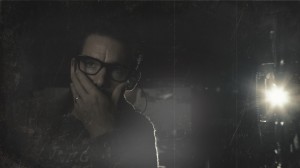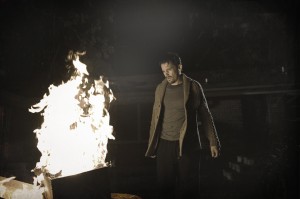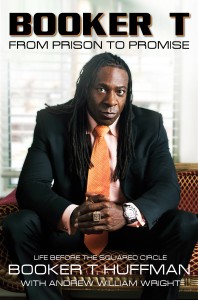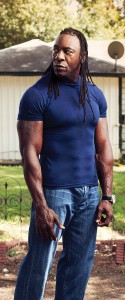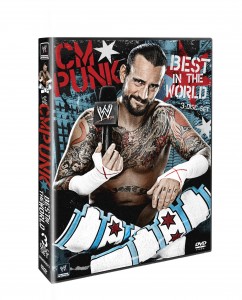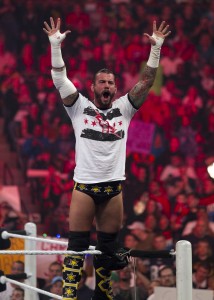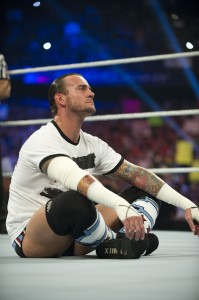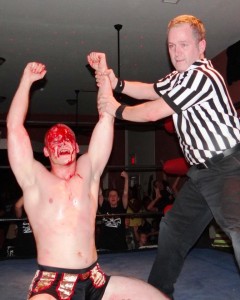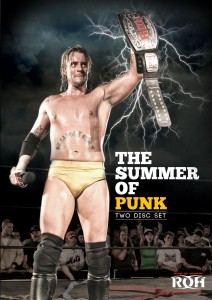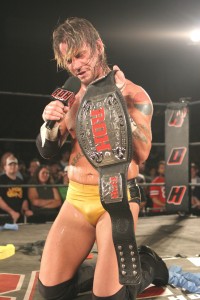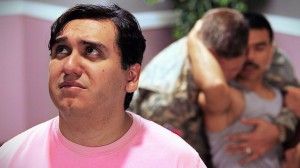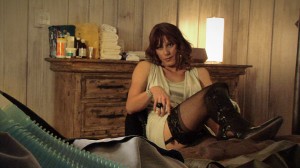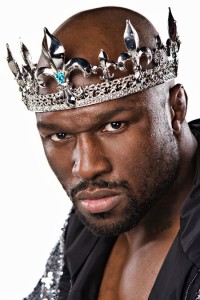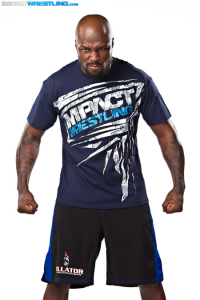Everybody knows it’s a bad idea to go to sleep right after watching a horror movie. And if anyone should know that, it should be a movie critic like C. Robert Cargill. But that didn’t stop him from watching The Ring, then going to sleep and having a bad dream that inspired Sinister, the new horror film he co-srote with The Exorcism of Emily Rose director Scott Derrickson. Having previously become fans of each others’ work, the two met when, by coincidence, they realized (thanks to Twitter) that they were both in Las Vegas at the same time. Derrickson was working on a different project altogether, but when he heard Cargill’s idea he decided to turn it into a movie. And Sinister was committed to film.
Starring Ethan Hawke as Ellison, a writer who found fame after writing a hit non-fiction book about a murder, Sinister follows Ellison’s quest to reclaim that glory after his subsequent books haven’t fared as well (and have left a sour taste in the mouths of many cops, who he typically doesn’t portray in flattering fashion). After he moves into the house where an entire family was murdered (aside from one girl, who has been missing since the murders), he finds a box of Super 8 home videos that turn out to be gruesome snuff films, including one of the family that used to live in his new home being hung from a tree in the back yard. As he watches these films and conducts his investigation, he uncovers an eerie Pagan creature known as Bagul, or Mr. Boogie to the children he encounters. Refusing to acknowledge the increasingly odd occurrences happening to his family as his investigation continues, Ellison sees these developments as the perfect opportunity to regain his fame. Before Bagul comes to life on the big screen, Cargill and Derrickson talk to Wrestling with Pop Culture about Sinister‘s themes of fear, their intentional misguiding of the viewer and breaking some traditional horror film formulas to create something frighteningly fresh.
When people die in horror movies, there’s often some moral reason for these deaths. We don’t know much about the previous victims in Sinister, but we learn a good bit about Ellison. Is there any indication in Sinister that the killer is out to set something right or teach his victims a lesson?
Derrickson: There’s certainly a moral tale being told in that, like all horror films, it’s a movie about fear, it’s a movie about scaring the audience and the main character getting scared. But probably my favorite thing about the movie overall is the fact that Ethan’s watching these movies and they’re scaring him, then these weird things are starting to happen as a result of him moving into this house, then things are becoming inexplicable paranormal for him and he gets even more scared at that, yet why doesn’t he leave? Because he has an even deeper fear than all that and it’s his fear of losing his status and his fear of not regaining his fame and fortune. That’s a really relatable fear, especially in modern America where everybody’s obsessed with their status. His placing his own need to reclaim his high status above his family’s safety, and his fear of not having that, is the moral sin, for lack of a better word, that’s at the center of the movie. It causes him to make a faustian bargain very early on. He should have handed that stuff over to the police, but he realizes, as he says in the film, “This is my shot.” From that moment, he’s on a trajectory to the end of the movie.
Cargill: There’s even more to it than that in regards to the other families. The families are just collateral damage to what Bagul’s end goal really is. He’s a seducer, he’s getting someone to transgress and through that transgression, that’s where the evil really comes from. And there’s a lot of that running throughout Sinister.
Ellison’s fear of losing his fame is made apparent in one scene where he’s watching an old tape of his first television interview, which is presented in much the same way as when he’s watching these mysterious tapes of grizzly murders. Was that an intentional juxtaposition?
Derrickson: That was certainly deliberate. He’s caught inside himself in a way that he doesn’t realize and driven by a deep-seated fear that is so powerful he can’t escape it when he clearly should.
You also mentioned that he should have turned these tapes and his investigation over to the police. When he finally does decide to drop his investigation and get away from it all, why does he abandon it rather than turn it over to the police?
Derrickson: Just prior to that moment, he’s talking to the deputy and makes it clear that he doesn’t believe in any of that stuff, that he’s a skeptic, but things are getting too weird. Then he goes up in his attic and sees six ghost kids and Bagul, Mr. Boogie. At that point he knows he’s dealing with something far beyond this world.
Cargill: And to make it even simpler than that, he realizes the tapes are just evil.
Derrickson: That’s why he burns them. When he realizes that’s where it’s coming from, he asks the professor what would happen if you destroy [the source]? The professor says it would close the gateway, so he thinks he should be safe. But he’s wrong.
The only thing connecting the families is where they’ve lived. But unlike a lot of horror films, where one particular setting is cursed, this curse moves with the families. Why did you decide to do it that way?
Cargill: Quite simply, it was because who the hell would move into a house where five different families were murdered? By the second family that’s murdered, that house would be burned down or bulldozed.
Derrickson: And the connection of the killer is clear. The whole world would be investigating that.
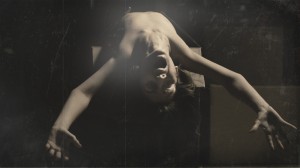
Ellison's son (played by Michael Hall D'Addario) appears to be under Bagul's influence in "Sinister" (courtesy Summit Entertainment)
Cargill: Ultimately, at the same time I wanted to create a creature that could get you almost anywhere. You’re not safe and it’s not localized terror. It is a creature of the other world that can move freely about. At some point you’ve got to wonder just how long could Jason stay around Crystal Lake. As long as you don’t go to Crystal Lake, you’ll be fine. No, you want that horror to be out there in the world unleashed.
Derrickson: Bagul is an entity who resides within works of art. There’s a sophistication to the way he does things and I like the idea that he seduces children, he’s the eater of children, and when it comes time to wipe out their families and have these children practice this ritual killings, he drives them to another place. That keeps the trail cold and there’s something smart about that, which I really like.
Up until a certain point in the movie, the viewer still wonders if there’s actually anything supernatural going on and that maybe it’s just a guy who manipulates children into doing these horrible things.
Derrickson: Ethan definitely thinks that’s what it is, and so does the officer. The deputy is the one who puts it all together, but they both think this is a ritual killer and the deputy has cracked his code. He’s right, it’s just not a guy.
About a year ago a movie called Insidious (read my interview here) came out. A lot of things about Sinister remind me of Insidious, including the fact that it has a grim ending that bigger studios wanted to change. There have been a few other movies with a similar feel that have come out since then, but they’ve all been from smaller studios. What do you think it would take for Hollywood to realize these films are getting cult followings and could be making them a lot of money?
Derrickson: Summit has been giving this movie a big push, but with horror you save that campaign for the three weeks before. That’s just how horror releases work.
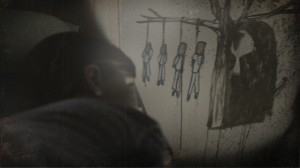
Ellison's daughter (Clare Foley) sees some of Bagul's previous influences in "Sinister" (courtesy Summit Entertainment)
Cargill: It’s going to take one or two more successful really dark, heavy films. The thing is a lot of executives have short memories. They feel that the audience is fickle and that their tastes change. They can name the greatest horror films of all time, but they can’t tell you why they’re the greatest horror films of all time. So what it’s going to take is a few hit films like Insidious and, fingers crossed, Sinister and things of their ilk to show them that audiences do want dark, heavy, scary, macabre horror, that it doesn’t have to have a happy ending and it doesn’t have to be built for sequels or be formulaic. The big studios were afraid of a few elements in the film, so they looked at it and passed. The ending bothered them a bit, the death of children bothered them and they were like, “Audiences won’t buy into that. They don’t want that. It’s far too risky to put this out.” Then when audiences go and love it, the studios are like, “We don’t understand.” So it will take a few more successes for the studios to go, “Oh, wait. This is hot right now.” And that’s how they’ll put it. They won’t put two and two together that every great horror film has a really heavy ending. They think that Saw was successful simply because of how grizzly it was. They forget Saw had a really downer of an ending where the bad guy wins. They forget that so many of these horror films end very poorly for the protagonists and the characters you’re invested in. That’s where this horror comes from is the fact that they aren’t safe. They’ll tell you that The Omen was great or that Rosemary’s Baby was a big blockbuster and they kind of forget that at the end of The Omen, the little kid is the only one left alive and that he’s killed the family and that Rosemary does give birth to the devil’s child.
It’s funny that you mentioned Saw because the way this movie ends, you could definitely do sequels or prequels. But then you’d run the risk of subsequent movies following the Saw formula where the focus ends up being on making each death more shocking than the previous one.
Derrickson: We don’t know exactly what we’ll do if the movie is successful and there’s going to be a franchise, but we don’t want to do that. What we’ve talked about is not wanting to do the predictable sequel thing and just put the box in another house and have more extreme kills. That’s just not why we made this movie and that’s not why people are going to like it and, if it works, that’s not what the sequels will be.
The two of you kind of serendipitously came together to work on this film. Given the chemistry you clearly have working together, do you plan on working on other films together in the future?
Cargill: As often as possible.
Derrickson: We really like each other and have great respect for each other. We’ve got several things that we’re doing now, both paid projects and a spec script that we’ve already got a first draft of.
And you also have a book coming out, right Robert?
Cargill: Yeah, it’s called Dreams and Shadows.
Derrickson: I’ve read it. It’s awesome.

